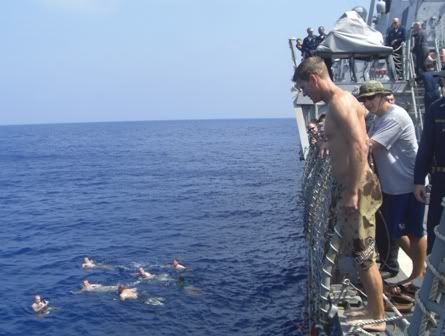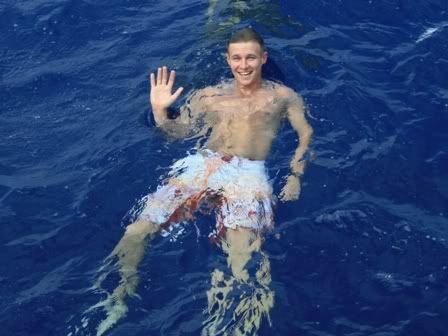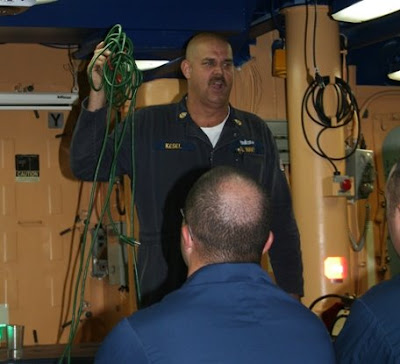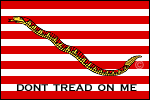A Day To Remember (Part 3)
By SKSN Jeremy Henthorne
This is the final in a three part series from SN Henthorne detailing his experiences during the Somali rescue operation last June.
So many emotions were being displayed; so many more being bottled inside by everyone on the ship. On the forecastle alone people were just in a daze about what they had just witnessed. Everyone was so passionate about wanting to help these people that it didn’t matter what time it was - if they had eaten, if they had to be up for the early watches - none of that mattered. Everyone on the ship worked towards the goal of helping get these people back to healthy. But there was another emotion going through everyone’s mind at this time. What were these people fleeing from back where they came from? What is going to happen when we turn them over to the Somali Coast Guard? Caught between moral emotions and the legal binds that are in place, this was a very sad night for most. Though torn apart by this, everyone knew that it was not in our hands; there was simply nothing we could do about the fact that we have to bring them back to Somalia.
The time came when I was too exhausted to be of further assistance so I asked one last time if anyone needed anything. They all were getting ready to let the next watch come on to keep on eye on each of the patients and administer any medical help needed throughout the night. In the morning we heard the boats being lowered into the water as they took each of the sick men, now doing much better from when they originally came to us the previous afternoon, back to the disabled boat.
As we left the boat and all the people in it with the Somali Coast Guard, many people were in a haze as to the events that happened the night before. Did this really happen? Did we really just help a stranded ship? all these questions floated in the minds of the sailors onboard Russell. Many tried to forget what they saw, smelt, and heard on the boat; others sat quietly reflecting about the events. The one thing that everyone was thinking about was how we came together and worked as a team to do everything in our power to help these people. It took the whole crew being selfless for a day, putting holiday routine in the back of their minds and focusing on doing what needed to be done.
I can say that I am proud to serve with the men and women of the USS Russell. What I saw that day was a sight that will never be forgotten. From manning extra watches for lookout, to getting food and water ready, to pulling the sick aboard, to the boarding team bringing the supplies to the boat and trying to calm down the stranded passengers - everyone contributed to the success of the event.
When I look back on that day and think about what I saw and what I did and what I saw others do, it makes me feel proud to be a part of this organization. And when I think of the seventy men, women, and children of that boat, I thank God for everything that I have, to be a citizen of a country that isn’t so bad that people flee and risk their lives to try to find a better life. It reminds me that even on my worst day out here, it could be a whole lot worse. I am thankful that I was given the opportunity to help someone in need and I know that many others on this ship feel the same way. It was an eye opening experience and I think it is one that many will take with them the rest of their life.
Go to part 1.






















































